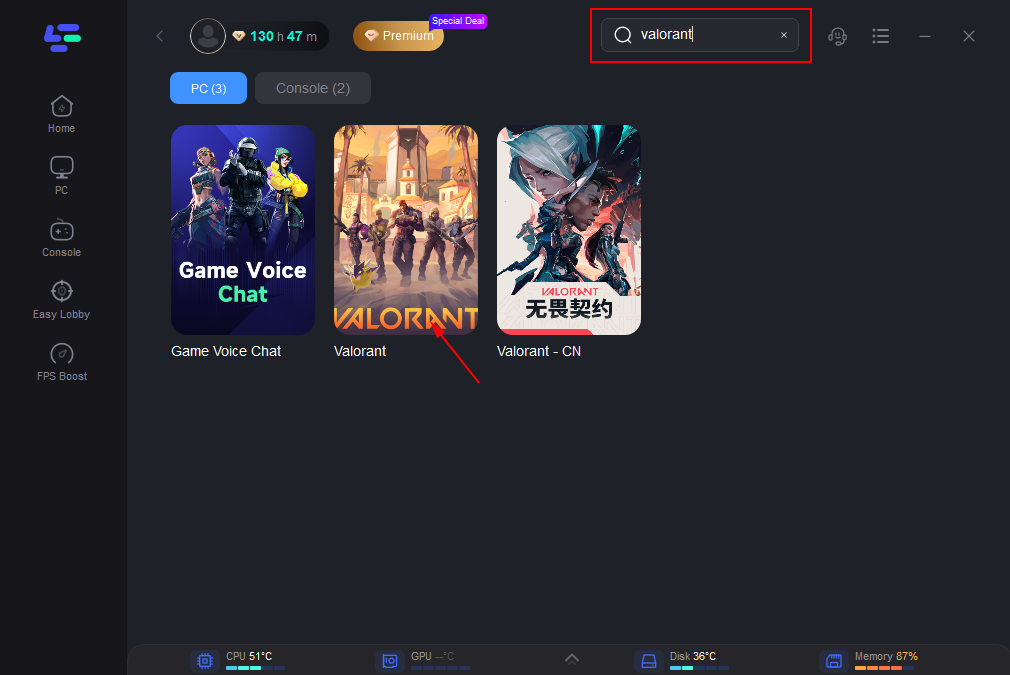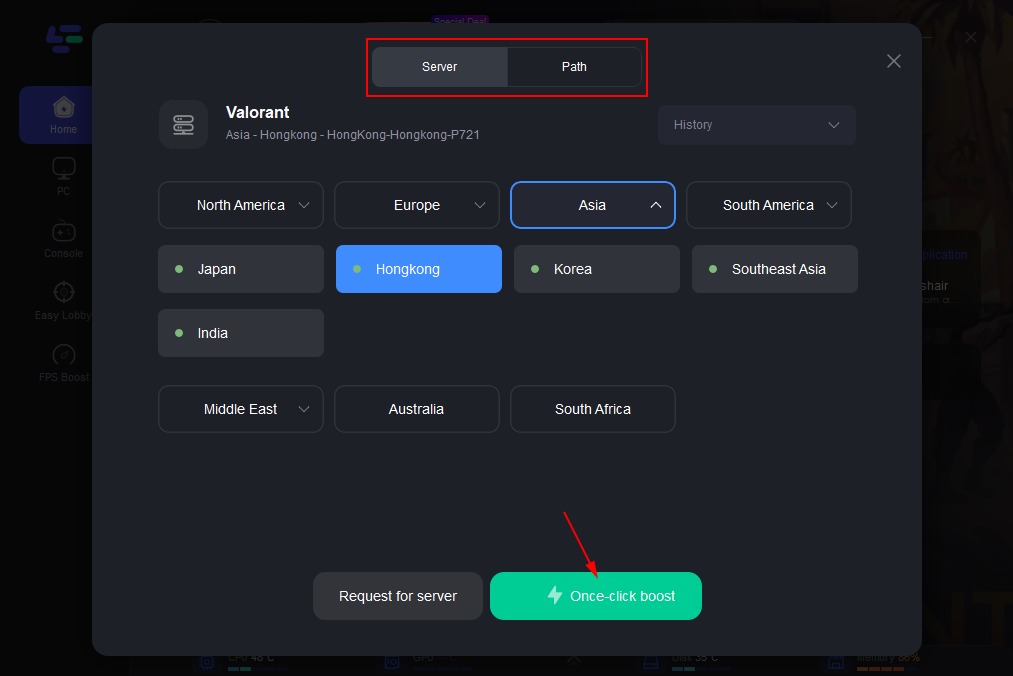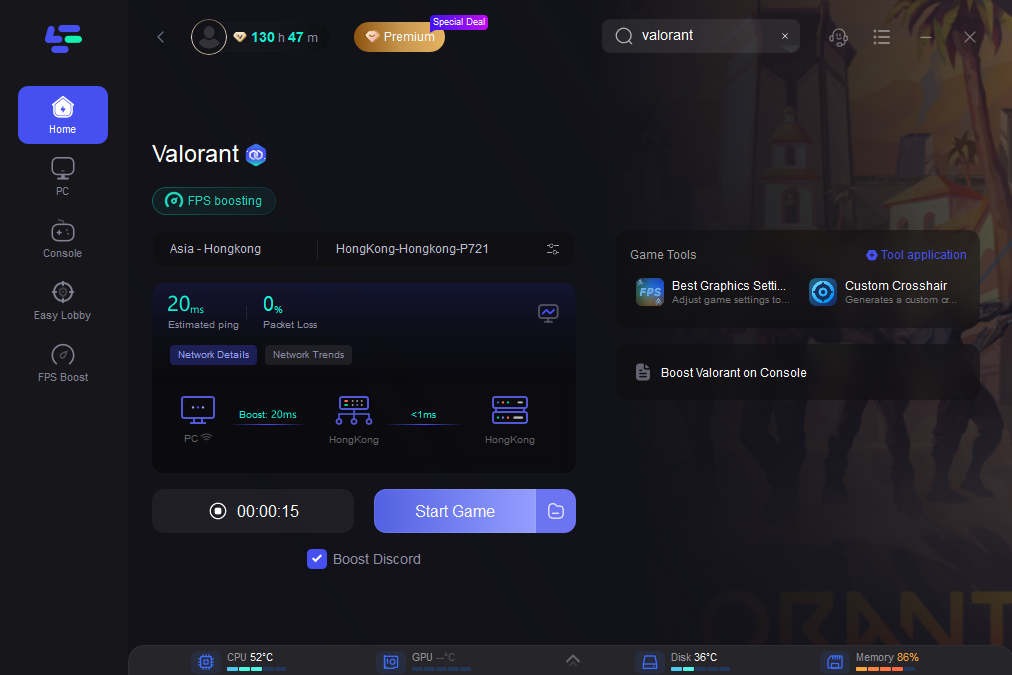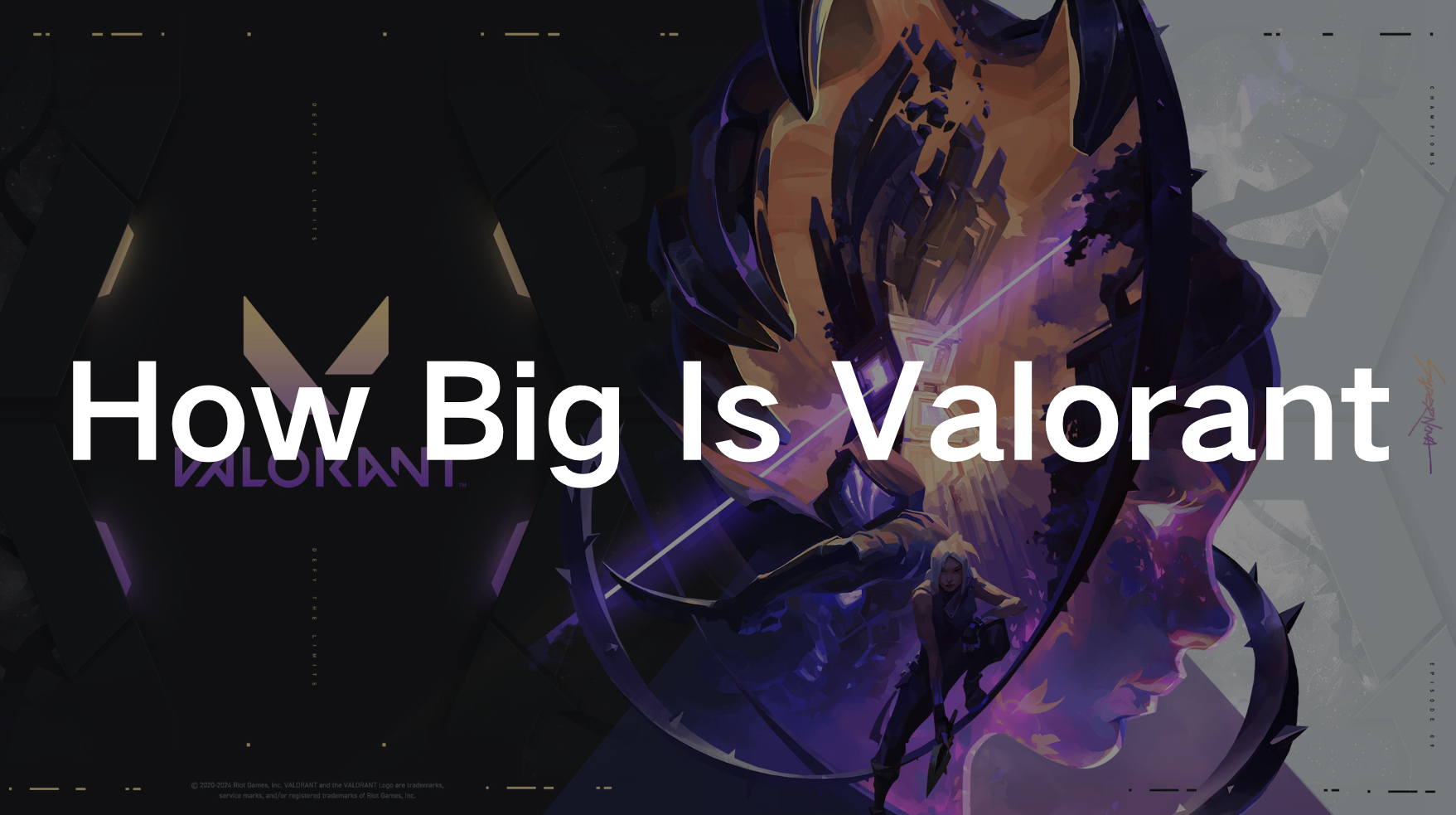
Valorant, Riot Games' tactical first-person shooter, has gained immense popularity since its release.
As players continue to flock to this game, one common concern among new and existing players alike is understanding the game's size, system requirements, and how to optimize their gaming experience.
In this article, we’ll delve into everything you need to know about Valorant’s size, why it takes up the space it does, and how to ensure a smooth gaming experience.

Part 1: How Many Gigabytes Is Valorant?
Part 2: Why Does Valorant Take up so Much Space?
Part 3: What Are Valorant System Requirements?
Part 4: What GPU is Good for Valorant?
Part 5: How Can I Ensure Valorant Gaming Experience?
Part 1: How Many Gigabytes Is Valorant?
Valorant is known for its efficient use of storage space compared to other modern AAA games. As of the latest updates, Valorant takes up approximately 20-30 GB of storage space on a PC. The size can vary slightly depending on updates, patches, and additional content that Riot Games periodically releases.
When you first download Valorant, the initial download size is around 7-8 GB. However, once installed, the game unpacks and requires more space, bringing the total size to the aforementioned 20-30 GB range.
This relatively modest size is one of Valorant's strong suits, allowing players with limited storage to still enjoy a high-quality gaming experience without having to sacrifice too much of their hard drive space.
Part 2: Why Does Valorant Take up so Much Space?
While Valorant's size is relatively small compared to other games in its genre, some players may still find themselves wondering why it takes up the space it does.
The game’s size is largely attributed to several factors:
High-Quality Assets and Textures
Valorant employs high-resolution textures, detailed character models, and complex maps. Even though the game isn’t as graphically intense as some other shooters, it still maintains a high standard for visual quality, which requires a significant amount of storage.
Frequent Updates and Patches
Riot Games is known for regularly updating Valorant with new content, bug fixes, and balance patches. These updates, while essential for maintaining game quality and introducing new features, can add to the overall size of the game. Each update brings new data that accumulates over time, gradually increasing the game’s size.
Anti-Cheat Software
Valorant's anti-cheat software, Vanguard, is a robust system designed to keep the game fair and free from cheaters. While Vanguard operates mainly at the system level, it does include some data that is part of the overall game installation, contributing slightly to the total size.
Part 3: What Are Valorant System Requirements?
Before diving into Valorant, it's crucial to ensure that your PC meets the game's system requirements. Valorant is designed to be accessible, running on a wide range of systems, including lower-end PCs. Here’s a breakdown of the minimum and recommended system requirements:
Minimum System Requirements:
- OS: Windows 7/8/10 (64-bit)
- Processor: Intel Core 2 Duo E8400
- RAM: 4 GB
- Graphics Card: Intel HD 3000
- VRAM: 1 GB
- DirectX: Version 11
- Storage: 20-30 GB available space
Recommended System Requirements:
- OS: Windows 10 (64-bit)
- Processor: Intel i3-4150
- RAM: 4 GB
- Graphics Card: Geforce GT 730
- VRAM: 1 GB
- DirectX: Version 11
- Storage: 20-30 GB available space
High-End System Requirements (For 144+ FPS):
- OS: Windows 10 (64-bit)
- Processor: Intel Core i5-4460 3.2GHz
- RAM: 4 GB
- Graphics Card: GTX 1050 Ti
- VRAM: 1 GB
- DirectX: Version 11
- Storage: 20-30 GB available space
Valorant is optimized to run on a wide variety of hardware, making it accessible to both casual gamers and those with high-end gaming rigs.
Part 4: What GPU is Good for Valorant?
Valorant, while not the most graphically demanding game, still benefits from a decent GPU to deliver smooth gameplay, especially if you're aiming for higher frame rates or have a high-refresh-rate monitor. Here’s a look at the GPUs that are good for different levels of Valorant gameplay:
Entry-Level GPUs:
- NVIDIA GTX 1650: This card is an excellent choice for players looking to game at 1080p with medium settings while maintaining 60+ FPS.
- AMD Radeon RX 570: A comparable option to the GTX 1650, offering similar performance.
Mid-Range GPUs:
- NVIDIA GTX 1660 Super: A solid choice for 1080p gaming at high settings, capable of delivering 144+ FPS.
- AMD Radeon RX 580: Another great mid-range option that can handle high settings at 1080p with ease.
High-End GPUs:
- NVIDIA RTX 3060: For players with a high-refresh-rate monitor (144Hz or higher), this GPU will ensure you can fully utilize that refresh rate with 1080p or 1440p gaming at ultra settings.
- AMD Radeon RX 6700 XT: Comparable to the RTX 3060, offering excellent performance for high-refresh-rate gaming at higher resolutions.
Choosing the right GPU depends on your monitor’s resolution and refresh rate. Even lower-end GPUs can handle Valorant well at 1080p, but for competitive play at higher frame rates, a mid-range to high-end GPU is recommended.
Part 5: How Can I Ensure Valorant Gaming Experience?
To ensure the best possible gaming experience in Valorant, it’s not just about having the right hardware optimization and network stability play crucial roles as well. This is where tools like LagoFast come into play. LagoFast is a dedicated gaming VPN and lag reducer that can significantly enhance your Valorant experience. It optimizes your network connection, reducing ping and minimizing lag spikes, which is crucial in a fast-paced game like Valorant. LagoFast works by connecting you to the most optimal servers, reducing the distance your data has to travel. This not only decreases your ping but also stabilizes your connection, reducing the chances of frustrating lag spikes. With LagoFast, you can maintain a consistent connection, which is especially important in competitive matches where every millisecond counts. Moreover, LagoFast’s user-friendly interface makes it easy to optimize your gaming network without needing to be a tech expert.
Tutorial to use LagoFast to ensure Valorant gaming experience:
Step 1: Click the Free Trial button to download and install LagoFast.
Step 2: Search Valorant in the search bar, click it after appearing.

Step 3: Click on “Server” to change to a better server that ensures the gaming experience, then click on “One-Click Boost”.

Step 4: Check the specific game ping, packet loss, and multiple path connection on the right side. Finally, click the “Start Game” to play the game.

Conclusion
Valorant’s relatively small file size, coupled with its moderate system requirements, makes it an accessible game for a wide audience. Understanding how many gigabytes Valorant occupies, why it takes up that space, and ensuring your system meets the requirements are all crucial steps to enjoying the game at its best. Pairing your setup with the right GPU and using tools like LagoFast for network optimization can further enhance your experience, ensuring you stay competitive in every match.

Boost Your Game with LagoFast for Epic Speed
Play harder, faster. LagoFast game booster eliminates stutter and lags on PC, mobile, or Mac—win every match!
Quickly Reduce Game Lag and Ping!
Boost FPS for Smoother Gameplay!

